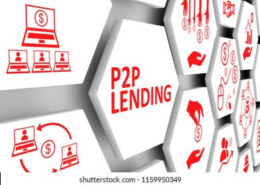Peer-to-peer lending and crowdfunding have witnessed significant developments in recent years, shaping the financial landscape. From increased regulatory scrutiny to innovative platforms connecting borrowers and lenders, this article explores the evolving trends and challenges in these alternative financing methods, offering insights into their impact on traditional banking and investment avenues.
Peer-to-peer lending (P2P lending) is a method of lending money directly to individuals or businesses without involving traditional financial institutions. Online platforms connect lenders with borrowers, allowing individuals to borrow from a pool of investors.
Crowdfunding, on the other hand, involves raising small amounts of money from a large number of people to fund a project, business, or cause. It can take various forms, such as reward-based crowdfunding, where backers receive non-financial rewards, or equity crowdfunding, where backers become investors and receive a stake in the venture.
Both P2P lending and crowdfunding leverage technology to facilitate direct interactions between individuals, bypassing traditional intermediaries in the financial process.
Over the past few years, these alternative financing methods have undergone significant developments, bringing both opportunities and challenges to investors and entrepreneurs alike.
1. Regulatory Dynamics:
One of the most notable aspects of P2P lending and crowdfunding is the increased regulatory scrutiny. Governments and financial authorities worldwide are recognizing the importance of establishing clear guidelines to protect investors and ensure the stability of these platforms. Regulatory changes vary across regions, impacting the operational landscape for both borrowers and lenders.
2. Global Expansion:
P2P lending and crowdfunding have transcended borders, witnessing a global expansion. Platforms have emerged in various countries, creating a borderless network of lenders and borrowers. This globalization not only offers diverse investment opportunities but also presents challenges related to regulatory compliance and cross-border transactions.
3. Technological Innovations:
Technological advancements continue to drive developments in P2P lending and crowdfunding. The integration of blockchain technology and smart contracts has improved transparency, security, and operational efficiency. These innovations are reshaping the way transactions are conducted, reducing the reliance on intermediaries.
4. Diversification of Offerings:
Platforms have diversified their offerings to cater to a broader range of financial needs. P2P lending now spans personal loans, small business loans, real estate financing, and more. Similarly, crowdfunding has evolved with various models, including reward-based, equity-based, and debt-based crowdfunding, providing backers with multiple avenues to support projects.
5. Disruption of Traditional Banking:
P2P lending and crowdfunding have disrupted traditional banking models. By facilitating direct connections between lenders and borrowers, these platforms have challenged the dominance of conventional financial institutions. Traditional banks are now compelled to adapt, collaborate, or face increased competition from these alternative financing avenues.
6. Risk Management Strategies:
Platforms have become more sophisticated in managing risks associated with P2P lending and crowdfunding. Advanced data analytics and machine learning algorithms are employed to assess the creditworthiness of borrowers, minimizing the risk of defaults and enhancing the overall reliability of these platforms.
7. Social and Environmental Impact:
A notable trend is the increasing focus on social and environmental impact crowdfunding. Investors are showing growing interest in projects that align with ethical and sustainable goals. This shift reflects a broader societal consciousness about the impact of financial decisions on communities and the planet.
8. Secondary Markets:
Some platforms have introduced secondary markets, allowing investors to trade existing loans or securities. This liquidity feature provides flexibility to investors who may wish to exit their positions before the completion of the loan term, adding a new dimension to the investment landscape.
9. Innovative Financing Models:
In response to evolving market needs, innovative financing models such as revenue-based financing and income-share agreements have emerged. These models offer alternative structures that cater to specific business requirements, showcasing the adaptability of P2P lending and crowdfunding to diverse funding needs.
10. Challenges and Considerations:
Despite the remarkable growth, challenges persist. Concerns about default rates, regulatory compliance, and the potential for fraudulent activities underscore the importance of due diligence for both investors and borrowers. Understanding and navigating these challenges is essential for participants in the P2P lending and crowdfunding ecosystem.
In conclusion, the developments in P2P lending and crowdfunding highlight a dynamic and transformative era in finance. As these platforms continue to evolve, stakeholders must stay informed, adapt to regulatory changes, and leverage technological advancements to navigate the ever-expanding landscape of alternative finance.

